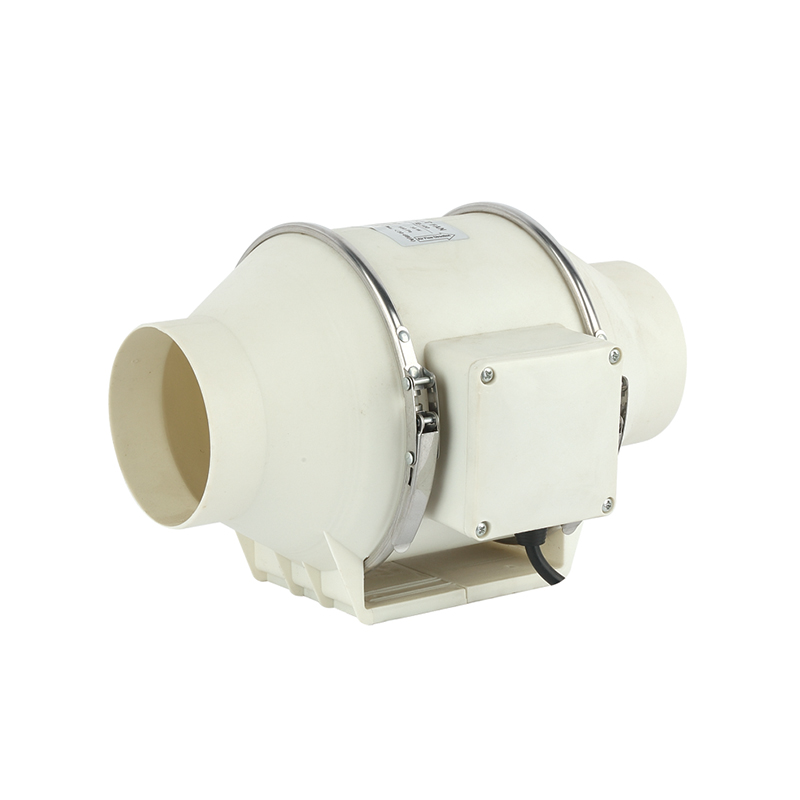Qinlang focuses on providing high-quality products and considerate services, and is committed to meeting every expectation of our customers.
The DKT-133 Cooling Ventilation Double Inlet Air Conditioning Fan is d...
See Details
In commercial buildings, maintaining efficient airflow is crucial for ensuring a comfortable and healthy indoor environment. The introduction of the new booster duct fan offers a practical solution for enhancing ventilation systems and improving air distribution. This technology addresses common challenges faced by large commercial spaces, such as inadequate airflow and uneven temperature control, by supporting existing ductwork and optimizing air movement throughout the building.
The new booster duct fan is designed to assist the central air handling units by increasing the velocity of air moving through duct systems. In many commercial buildings, long duct runs or complex layouts can cause air pressure losses, leading to reduced airflow at the vents. This often results in some areas receiving less fresh air, impacting occupant comfort and energy efficiency. By integrating the new booster duct fan into these systems, the airflow can be strengthened in specific sections of the ductwork, ensuring a more balanced and consistent distribution of conditioned air.
One significant advantage of the new booster duct fan is its energy efficiency. Unlike traditional fans that consume considerable power, this fan is engineered to operate efficiently, drawing less electricity while delivering improved airflow. Its motor and blade design reduce noise and vibration, making it suitable for environments where quiet operation is necessary, such as offices, hospitals, and schools. As commercial buildings increasingly seek sustainable and cost-effective HVAC solutions, the new booster duct fan fits well into this trend by offering improved performance with lower energy use.
Installation flexibility is another important feature of the new booster duct fan. It can be mounted directly within existing ductwork without requiring extensive modifications, which minimizes disruption and installation costs. This adaptability allows building managers to target problem areas in the ventilation system without the need for complete duct replacements. Additionally, the fan's compact design means it can fit into narrow or restricted spaces, a common limitation in many commercial facilities.
Beyond improving airflow, the new booster duct fan contributes to better indoor air quality. Enhanced air movement reduces the buildup of stagnant air pockets where dust, allergens, and pollutants might accumulate. By promoting continuous circulation, the fan supports more effective air filtration and ventilation, which is especially important in buildings with high occupancy or where air cleanliness is a priority. This feature helps maintain healthier indoor environments and supports occupant well-being.
Maintenance and durability are also considerations in the design of the new booster duct fan. Constructed with corrosion-resistant materials, it withstands typical environmental factors found in commercial HVAC systems, such as humidity and temperature variations. Routine maintenance is straightforward, involving accessible components that can be inspected and serviced without complex procedures. Reliable performance and ease of upkeep contribute to the long-term cost-effectiveness of the fan.
The new booster duct fan also provides flexibility in controlling airflow volume and speed. Many models come with variable speed options, allowing facility managers to adjust performance based on occupancy levels, seasonal needs, or specific zone requirements. This adaptability can result in energy savings and improved comfort by matching airflow precisely to the building's current conditions.
In commercial buildings where retrofit projects are common, the new booster duct fan offers a viable option to upgrade older HVAC systems. Instead of costly replacements, installing these fans can enhance existing infrastructure and extend the system's lifespan. This approach aligns with budget-conscious strategies while addressing ventilation challenges effectively.
The new booster duct fan improves airflow efficiency in commercial buildings by strengthening air movement through ductwork, reducing energy consumption, and enhancing indoor air quality. Its flexible installation, quiet operation, and durable construction make it a practical choice for various commercial environments. By integrating this technology, building managers can better manage ventilation challenges, providing occupants with a more comfortable and healthier indoor atmosphere while supporting sustainable building operations. The new booster duct fan represents an important advancement in commercial HVAC solutions, addressing both performance and efficiency concerns.